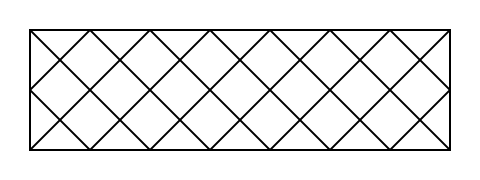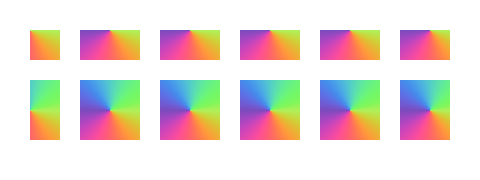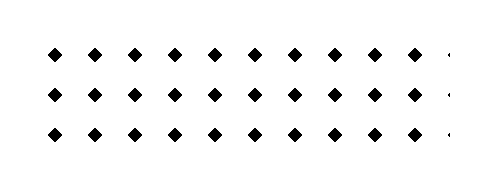pattern
A repeating pattern fill.
Typst supports the most common pattern type of tiled patterns, where a pattern is repeated in a grid-like fashion, covering the entire area of an element that is filled or stroked. The pattern is defined by a tile size and a body defining the content of each cell. You can also add horizontal or vertical spacing between the cells of the patterng.
Examples
#let pat = pattern(size: (30pt, 30pt))[
#place(line(start: (0%, 0%), end: (100%, 100%)))
#place(line(start: (0%, 100%), end: (100%, 0%)))
]
#rect(fill: pat, width: 100%, height: 60pt, stroke: 1pt)

Patterns are also supported on text, but only when setting the relativeness to either auto (the default value) or "parent". To create word-by-word or glyph-by-glyph patterns, you can wrap the words or characters of your text in boxes manually or through a show rule.
#let pat = pattern(
size: (30pt, 30pt),
relative: "parent",
square(
size: 30pt,
fill: gradient
.conic(..color.map.rainbow),
)
)
#set text(fill: pat)
#lorem(10)

You can also space the elements further or closer apart using the spacing feature of the pattern. If the spacing is lower than the size of the pattern, the pattern will overlap. If it is higher, the pattern will have gaps of the same color as the background of the pattern.
#let pat = pattern(
size: (30pt, 30pt),
spacing: (10pt, 10pt),
relative: "parent",
square(
size: 30pt,
fill: gradient
.conic(..color.map.rainbow),
),
)
#rect(
width: 100%,
height: 60pt,
fill: pat,
)

Relativeness
The location of the starting point of the pattern is dependent on the dimensions of a container. This container can either be the shape that it is being painted on, or the closest surrounding container. This is controlled by the relative argument of a pattern constructor. By default, patterns are relative to the shape they are being painted on, unless the pattern is applied on text, in which case they are relative to the closest ancestor container.
Typst determines the ancestor container as follows:
- For shapes that are placed at the root/top level of the document, the closest ancestor is the page itself.
- For other shapes, the ancestor is the innermost
blockorboxthat contains the shape. This includes the boxes and blocks that are implicitly created by show rules and elements. For example, arotatewill not affect the parent of a gradient, but agridwill.
Constructor
Construct a new pattern.
#let pat = pattern(
size: (20pt, 20pt),
relative: "parent",
place(
dx: 5pt,
dy: 5pt,
rotate(45deg, square(
size: 5pt,
fill: black,
)),
),
)
#rect(width: 100%, height: 60pt, fill: pat)

size
The bounding box of each cell of the pattern.
Default: auto
spacing
The spacing between cells of the pattern.
Default: (0pt, 0pt)
relative
The relative placement of the pattern.
For an element placed at the root/top level of the document, the parent is the page itself. For other elements, the parent is the innermost block, box, column, grid, or stack that contains the element.
| Variant | Details |
|---|---|
"self" | The gradient is relative to itself (its own bounding box). |
"parent" | The gradient is relative to its parent (the parent's bounding box). |
Default: auto
body
The content of each cell of the pattern.